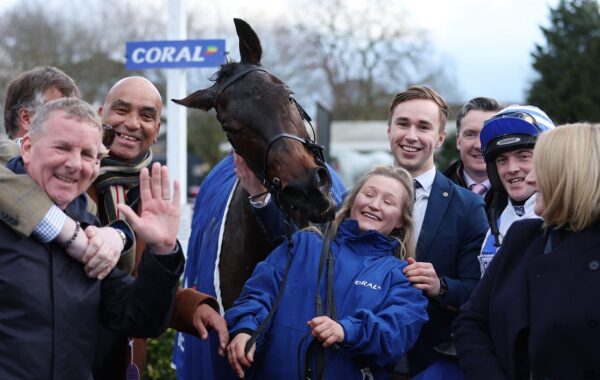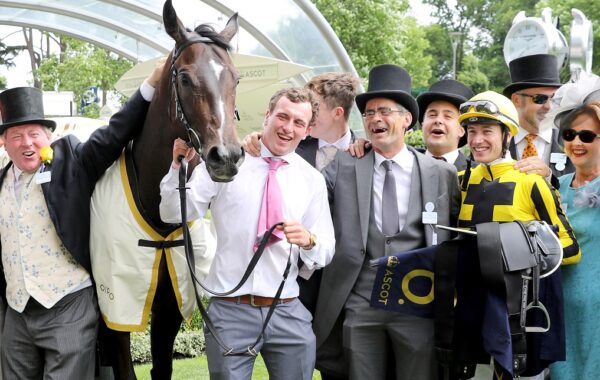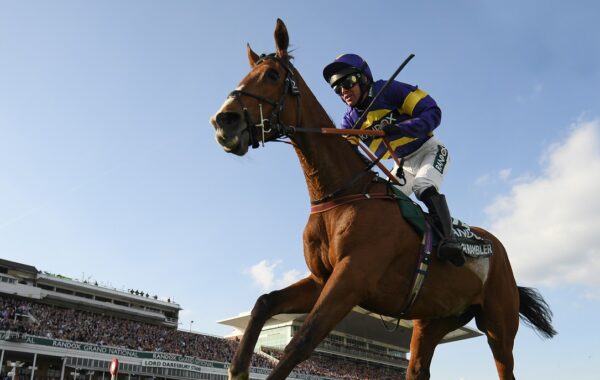One of the most vibrant areas of the current bloodstock sales market revolves around the sport of point-to-pointing.
Specialist sales have been built around point-to-pointers at Aintree, Cheltenham and Punchestown, while sections dedicated to pointers have been worked into general sales at Doncaster, generating large numbers of six-figure horses. With many going on to achieve success under Rules, the demand shows no sign of slowing.
At Tattersalls’ Cheltenham December Sale, the final auction of this kind in 2019, two pointers made £400,000-plus and ten horses sold for six-figure sums, all generating a profit on their purchase as stores. Tattersalls’ six Cheltenham sales in 2019 turned over £17,715,000 at an average price of £93,777.
At the company’s Festival Sale, held during Cheltenham’s four-day March meeting, the average price was £162,381, while at Goffs UK’s Aintree Sale the average was £127,920.
The catalogues usually include a few bumper horses or maiden hurdle winners, plus the occasional French juvenile hurdler, but they largely comprise point-to-pointers who have run once or twice and shown some ability.
Ireland dominates the market. It has the stallions and mares that produce the horses, it stages the two leading store-horse sales, it puts on an autumn and spring point-to-point season which provides the showcase opportunities, and has a wealth of talented specialist ‘handlers’, the trainers who turn an unbroken store into a maiden winner at the age of four or five.
Schooling grounds, open fields with fences in a circuit, provide many Irish handlers with a chance to polish a horse’s education to ensure they know their job first time out.
British traders of pointers are playing catch-up from way behind the curve, but they are showing signs of tapping into this market, not through a desire by the Ministry of Agriculture to widen horizons in rural communities, or through a focussed initiative by the BHA. It is down to the ambition of individuals who recognise the opportunities and want a slice of the action.
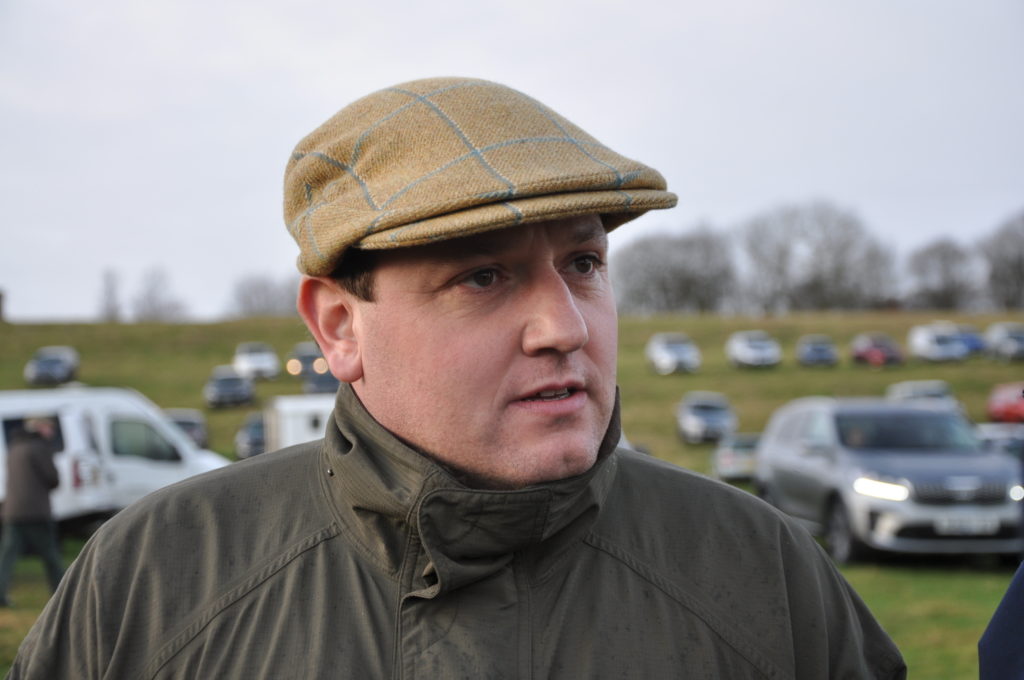
Tom Ellis: champion trainer of pointers – Photo: Carl Evans
It is their investments – and training abilities – which are being put to the test and have resulted in some eye-catching business. The record price for an ex-Irish pointer is £480,000 for a son of Flemensfirth called Flemenshill, and while the top ex-British pointer valuation is one of £220,000, that is not insignificant.
The horse in question, Network’s son Interconnected, made a handsome profit for the Tom Lacey-driven partnership which bought him for €37,000. After a run for Nicky Henderson Interconnected was resold at Doncaster to dissolve a partnership and became the highest-valued jumper sold at auction when making £620,000.
At a time when British point-to-pointing needs all the horses it can get, the sport has shown awareness of this small but growing sector, reaching out to commercially-minded people who want opportunities to showcase their store purchases.
Peter Wright, Chief Executive of the Point-to-Point Authority (PPA), is mindful that point-to-pointing was founded in the hunting field (as was jump racing) and grew as a fun way for amateurs to race over fences.
Those who still enjoy that side of the sport – one that has become rare at Irish point-to-points – are not easily won over to the idea of commercialism. They baulk at the prospect of sending out their homebred or cheaply-bought maiden against a Derby or Land Rover Sale graduate costing €50,000 to €80,000 or more.
Reflecting on his desire to keep pointing as a sport for all, Wright says: “For the current season we introduced two series of races, one for owner/trainers and another for veteran horses. However, for those hoping to bring on a young horse we also have a new series restricted to four- and five-year-old maidens – these are sponsored by Goffs UK and Tattersalls Cheltenham – in addition to our open maiden races, and we have 19 point-to-point Flat races [bumpers, to use a familiarly-heard term] over two miles and restricted to four- and five-year-olds.
“We need a broad church for the sport to flourish”
“They have proved very popular, with 22 runners in year one [2017], 108 in year two and 187 last year. There are also three point-to-point Flat races held on licensed courses – at Exeter, Aintree and Stratford – and restricted to four-, five- and six-year-olds who have won or been placed in a maiden race or point-to-point Flat race.”
That trio of races also offer the carrot of the TBA’s 3-2-1 Bonus, worth up to £3,000 and which rewards the first filly across the line, and in part justifies Wright’s claim that “pointing is working hard to assist in the development of UK breeding stock”. Backing that up is an 18-race series of maiden races for mares sponsored by the Jockey Club.
Wright adds: “We recognise that some people want to buy and sell young horses, some want a mix of young and older horses, and others are in the sport purely for fun, and we hope we are catering for all those groups. We need a broad church for the sport to flourish.”
Trading a way of staying in pointing
Britain’s champion trainer of pointers, Tom Ellis, says the opportunity to sell a horse is his only hope of staying in a sport which he has long enjoyed. A former rider who gained honours in the south Midlands region, he is married to Gina Andrews, Britain’s six-time champion woman rider.
Ellis, who has built a yard on his family’s Warwickshire farm, says: “The ability to train and sell a young horse is very important for us. We make very little out of training, and while we don’t pay rent we have plenty of staff and it wouldn’t stack up for us if we couldn’t trade a horse.
“The older, fun pointers, are important, but we wouldn’t buy and race young horses if there wasn’t an opportunity to sell them.”
The Ellis-trained Eurobot made £105,000 at Aintree two years ago, while recently-retired jump jockey Charlie Poste and his wife Fran Nimmo have been slowly inflating their investment in stores, spending more to buy better prospects.
They were rewarded in 2019 with the sales of Garry Clermont, who was bought for €24,000 and sold on for £150,000, and Switch Hitter, whose value rose from €26,000 to £120,000 after a winning debut in a point-to-point. They also traded several other horses for five-figure sums that represented profitable investments.
Peter Fahey, the son of Flat trainer Richard, and Nicky Tinkler, have tapped into the market from their Yorkshire stables, while Chris Barber, a great-nephew of leading jumps owner Paul Barber, is growing his pinhooking operation in Dorset.
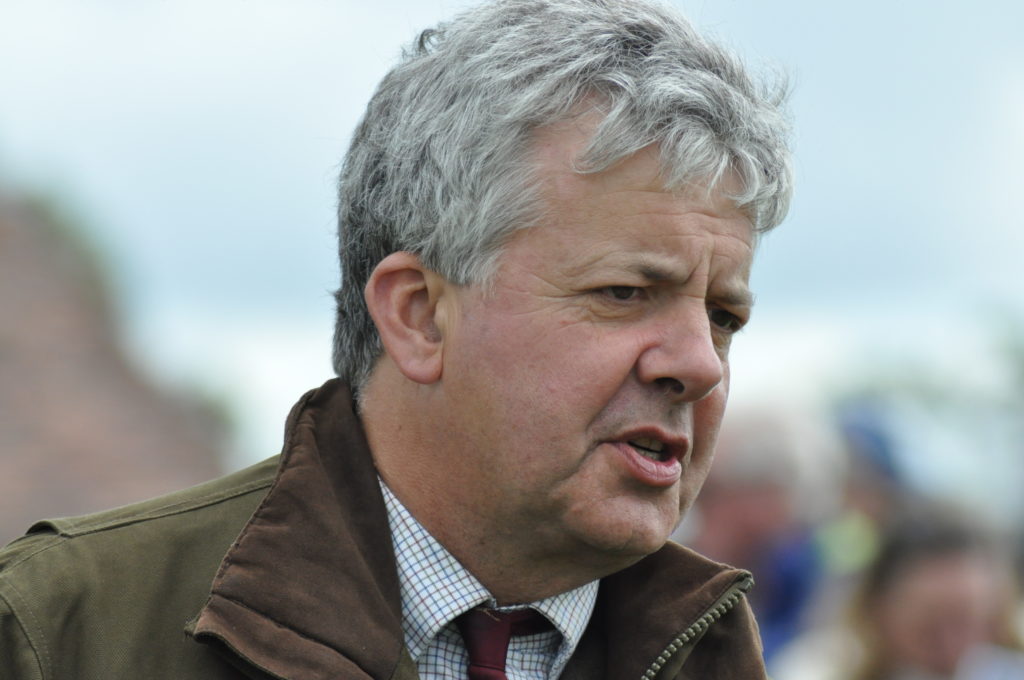
Peter Wright: Chief Executive of the Point-to-Point Authority wants to keep the sport for all – Photo: Carl Evans
Shropshire’s Phil Rowley, who trained Hazel Hill to win last season’s Cheltenham Foxhunter Chase, has trained numerous young pointers who have then gone to auction, among them Blossoming Forth, whose sale for £130,000 at Doncaster in May set a record for a filly or mare from the British pointing field.
The beacon for many of these traders has been Herefordshire-based Tom Lacey, who studied the Irish model and worked out that horses bought as stores had to possess size and scope, be well-bred by fashionable sires, and had to show their merit in their first or second point-to-point. After that they would be regarded as too exposed and their value would fall.
He began gaining rewards in the ring, and while it occasionally frustrated him that his horses’ valuations did not match the prices paid for Irish pointers, that was the penalty for being a pathfinder.
The market was unsure about the value of UK form, yet Lacey sold several horses for six-figure sums at public auction – in addition to some he traded privately – setting a chain in motion. Energumene and Ramillies are but two young horses sold by Lacey to none other than Willie Mullins, and both have run well in novice events in recent weeks.
Lacey has not been uncritical of the sport in Britain, in particular of meetings where his four-year-olds have been ineligible for maiden races, ruled out by conditions which stipulate horses must be five or older, or to have run in at least two races.
Such conditions were brought in at some fixtures because it was felt runner numbers fell when expensive store horses were entered, and the sport wanted to offer races to horses who would remain in pointing and go on to the next level.
Lacey got around the barricade with Ramillies by running him in a restricted race – the equivalent of Ireland’s winners- of-one-race – and then selling him for £215,000.
Foot and mouth changed the game
Embracing pure amateurism and the participation for fun with the growing area of buy-to-sell pointers is one which the sport in Britain now contemplates.
Commentator and auctioneer Richard Pugh is the founder of p2p.ie, the go-to website for all things relating to Irish point-to-pointing, and he is also Tattersalls Ireland’s director of horses in training.
An expert on Irish pointing, Pugh believes that an autumn season, beginning in October, is “crucial” to future prosperity for those in Britain who want to run and then sell a pointer.
Pugh says: “In Ireland the autumn season is not just crucial, it’s the very core. It is true that Irish pointers were being sold before an autumn season was created, and men like Tom Costello and Padge Berry traded plenty of pointers, but they didn’t have to do so to put bread on the table.”
The foot and mouth outbreak of 2001 changed the game, for while racing under Rules buckled, abandoning meetings in hot-spot areas which included that year’s Cheltenham Festival, point-to-pointing shut down on both sides of the Irish Sea. This was partly due to the rural nature of many venues, but also out of sympathy and a sense of unity with farmers.
Deprived of opportunities to race their horses, and therefore advertise their ability, Irish handlers turned to the Turf Club for help, and a one-off, eight-week run of autumn point-to-points was staged to enable horses to be raced and then sold.
The experiment worked so well that the Turf Club was pressed to allow another autumn season in 2002, and it has continued to this day, leading to expansion in the trading of young point-to-pointers, a raft of new, often youthful handlers who specialise in the trade, and a series of bloodstock auctions dedicated to that area of the market.
“The beacon for many of these traders has been Herefordshire-based Tom Lacey”
Pugh says: “Without foot and mouth it is not certain anyone would have come up with the idea of an autumn season, or considered putting in place the mechanics and funding for one.
“Before then there was no business model that could be sustained from pointing alone, but now we have a 12-month cycle, with a very short break in the summer.
“Stores are bought in the early summer, then broken and ridden away before the autumn season starts. That is followed by the spring season which completes the year, keeping staff and stables busy over 12 months.
“If a four-year-old proves too backward to run in the spring, or if the ground is too quick or too soft, it can be given time before running in the autumn – vendors no longer have to wait a full year to race a backward horse, and that also benefits the buyers and the horses.”
Britain’s season opens in mid-November, six weeks later than in Ireland, yet Peter Wright says: “Three hunts or clubs did want to stage October meetings last year, but there was no real interest from others to put on subsequent meetings. Without them we would have had a disjointed programme.
“Time is an issue, too. Irish point-to-pointing receives €2.2 million from the Irish government via Horse Racing Ireland, some of which goes to sorting out regulatory matters. We don’t receive such help, and while we are completing regulatory issues in June, they are finalised at the BHA’s September meeting, which gives us little time to complete fixture plans and publish details before the current season opens.”
Yet despite the clear evidence that Ireland does a very good job of turning stores into valuable pointers, Pugh says Britain still scores heavily in some areas.
He believes Irish pointing needs to take a leaf from the British model and reward owner/riders and those who train veteran horses “in case the bubble [demand for four-year-old pointers] should soften”.



